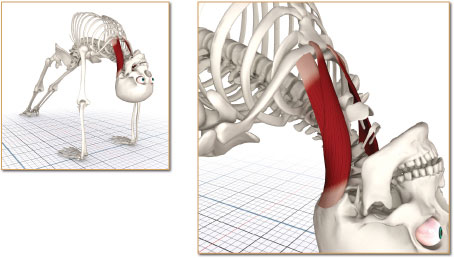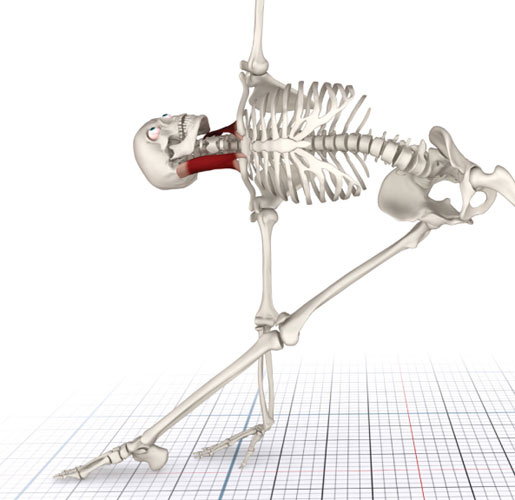
This is a two-headed strap-like muscle located on both sides of the front of the neck. It originates from the sternum and clavicle, inserting on the skull, behind the ear (the mastoid process).
Contracting the sternocleidomastoid when the head is fixed lifts the ribcage. It flexes the neck forward when the head is mobile. Contracting one side turns and tilts the head to the other side, stretching the contralateral muscle.
This muscle is important in creating the lock formed in Jalandhara Bandha and assists in lifting the ribcage during respiration. Tightness limits turning or extending the head as in Utthita Trikonasana or Purvottanasana, respectively.

Manubrium of sternum and medial section of the clavicle.
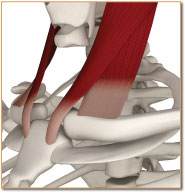
Spinal accessory nerve (cranial nerve 11 and cervical nerves 2 and 3).
Chakra illuminated: Fifth.
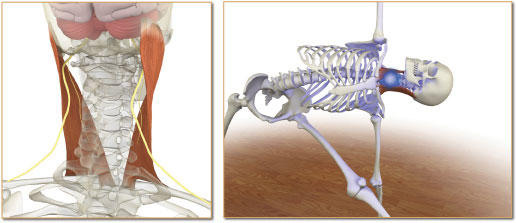
Mastoid process.
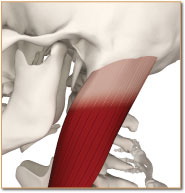
Trapezius and dorsal neck muscles.
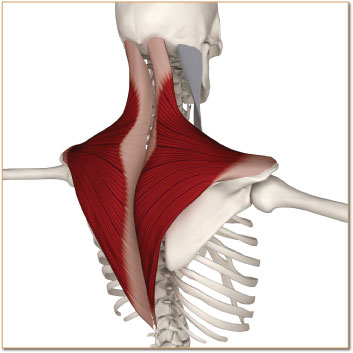
Sterno thyreoideus and scaleni.
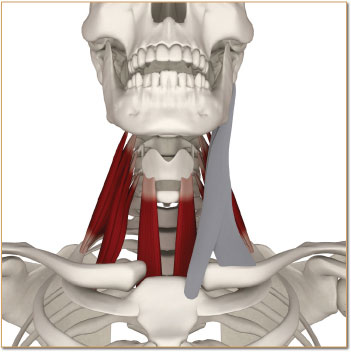
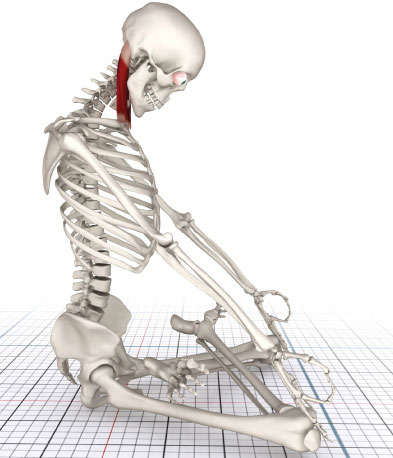
Bilateral contraction: Flexes the neck forward and draws the chin downward.
Unilateral contraction: Rotates and tilts the head to face the opposite side.
Closed-chain contraction lifts the ribcage during respiration.
The sternocleidomastoid contracts, drawing the head forward to the sternum in Padmasana. This action lifts the ribcage, accentuating Jalandhara Bandha.
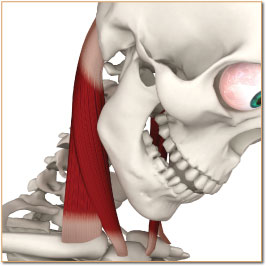
The lower-side sternocleidomastoid contracts in Utthita Trikonasana, lengthening the upper-side sternocleidomastoid and turning the head.
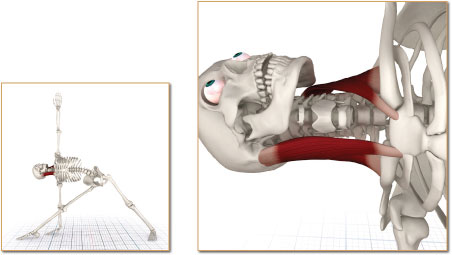
The dorsal neck muscles and upper trapezius contract in Purvottanasana, stretching both sternocleidomastoid muscles.
